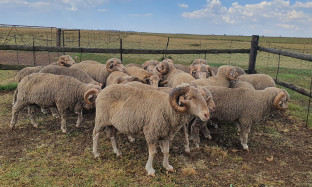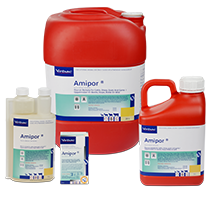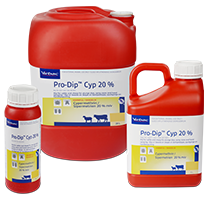
Karoo Paralysis : The Disease and Control measures
The Karoo paralysis tick (Ixodes rubicundus) is responsible for paralysis in livestock (Cattle, Sheep & Goats) and various antelope species in certain geographical areas. It may lead to serious losses.
Paralysis occurs in February to May, with peaks in April or May. Sudden drops in temperature stimulate the activity of the adult ticks and this is also when infestation increases. Affected animals become paralysed and some may show signs of incoordination and stumbling. The rule of thumb is that about 20 Karoo paralysis ticks will cause paralysis in an average size sheep after 4 days of engorgement. Depending on the animal, we get different degrees of paralysis from weakness in the hind limbs to complete paralysis. Large numbers of stock can be affected at once and younger animals are more susceptible.
To treat the affected animals, ticks need to be removed as quickly as possible, either by hand or with a dip. Deaths may occur if the ticks are not removed fast enough. Most of the animals will recover between 24-48 hours after removal of the ticks.
To prevent huge losses, treatment should therefore be preventative as soon as conditions become favourable, as the Karoo Paralysis tick infestation can increase quickly.
Dip animals early and frequently. Amipor pour-on can be used.
Remove sheep from hillside camps during winter. However, if they are returned before the end of the winter they should be either:
- Treated precautionary / preventatively or
- Monitored for tick challenge on animals within 3 days after entering the camp. Treat when necessary. A guideline when to treat, is when ± 10 ticks are counted on large animals (> 50 kg) and ± 6 ticks on lighter animals (20 kg). Monitor the animals for at least 2 weeks.
NB: Due to the long life cycle of the tick and environmental conditions, large differences in the intensity of seasonal activity may occur from year to year. This can be misleading in terms of the interpretation of the efficacy of dips. For example, a once-off treatment in one year (with a low challenge), may give the impression that the product has a long residual action. A once-off treatment the next year (with a high challenge), may give rise to huge losses with claims that the product suddenly no longer works.
Contact your local Virbac Technical sales advisor for more information regarding Karoo Paralysis and Control measures for your farm.



